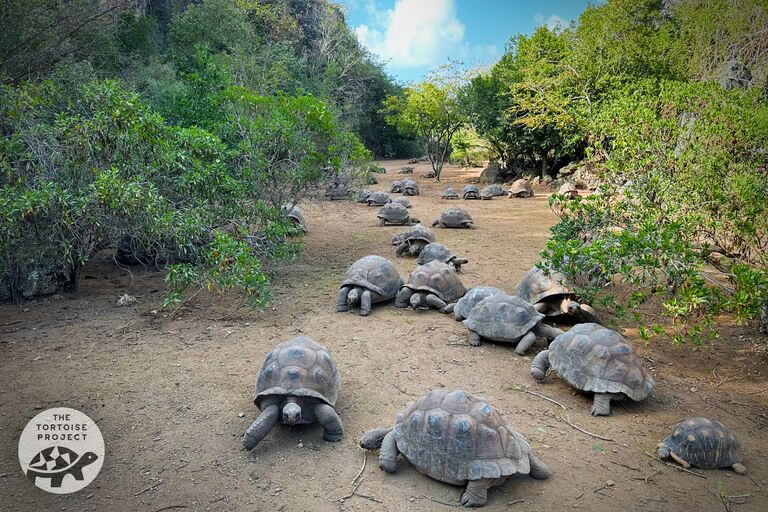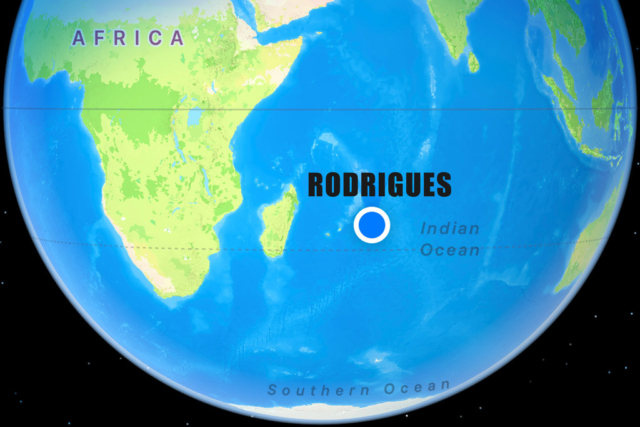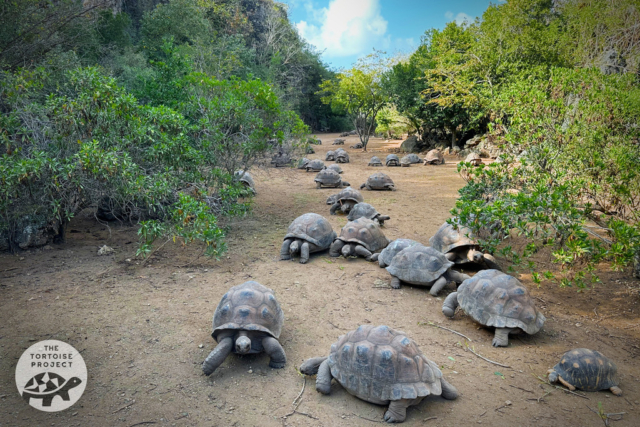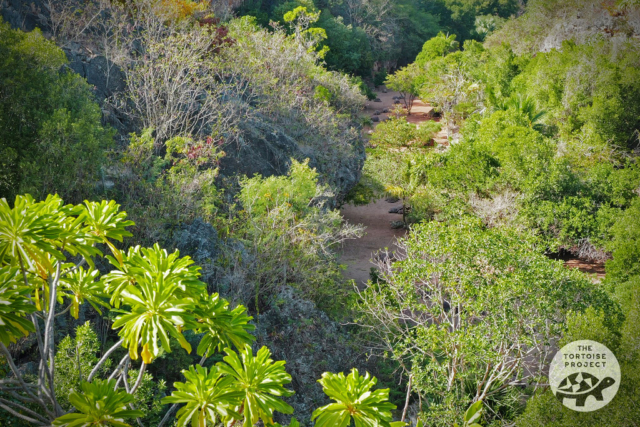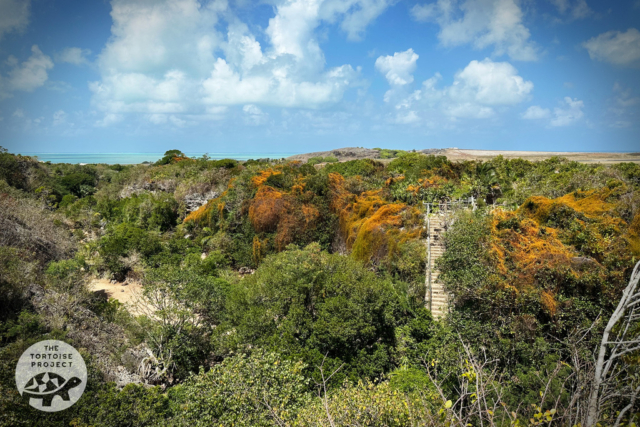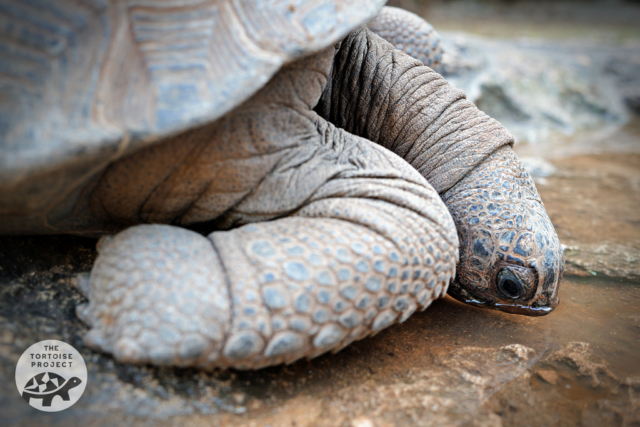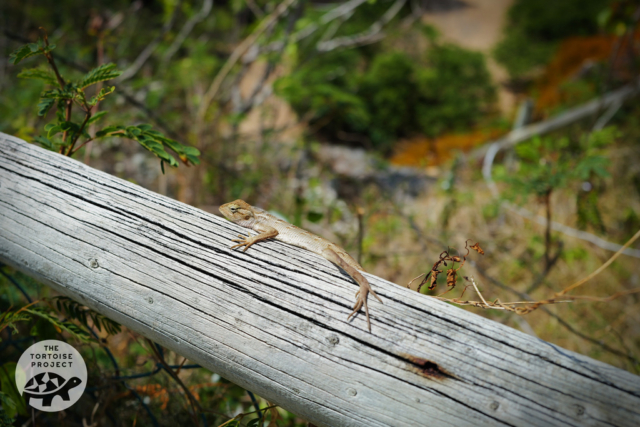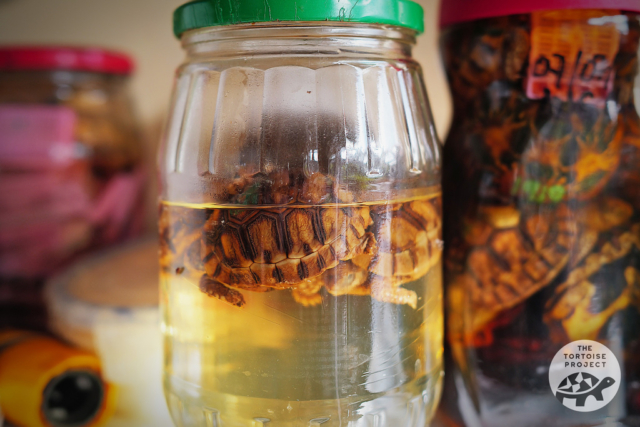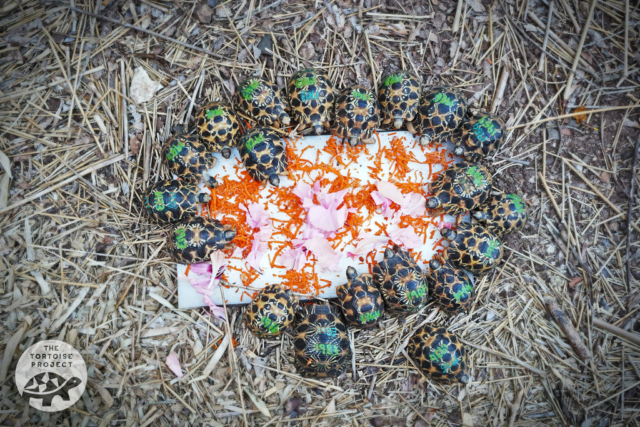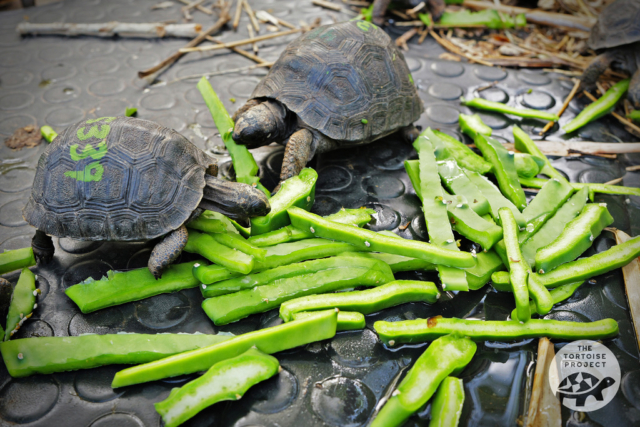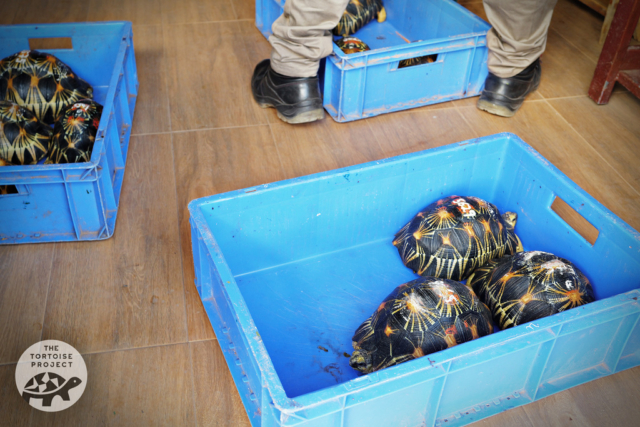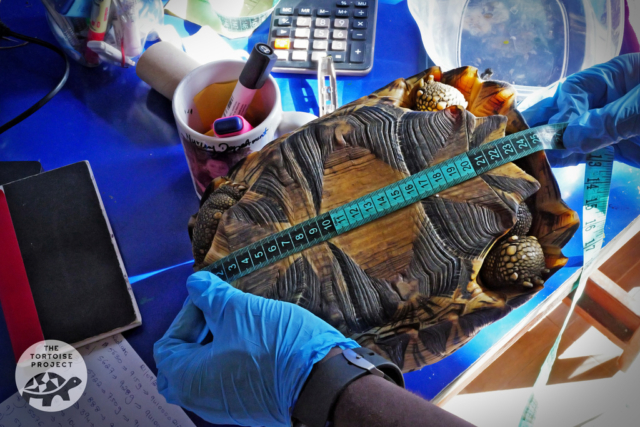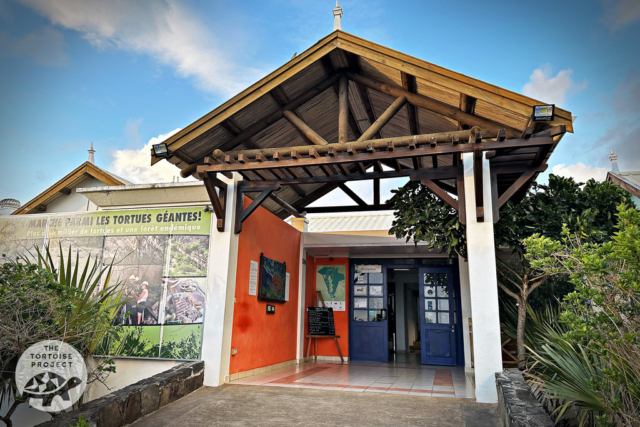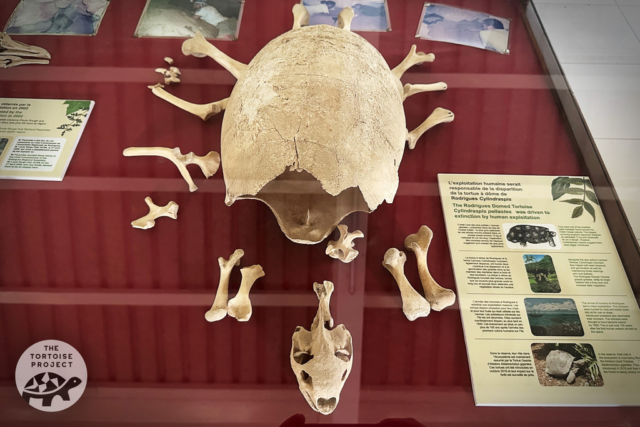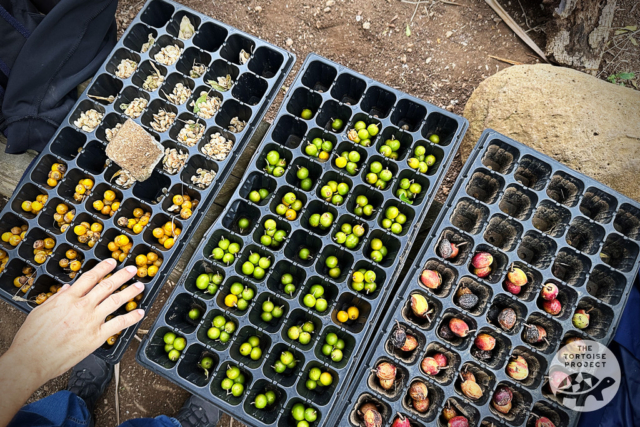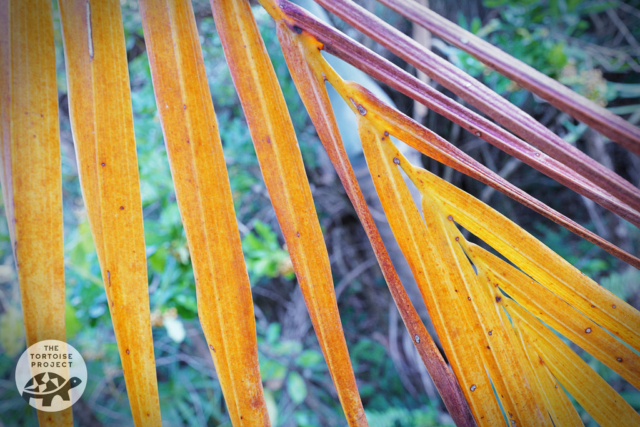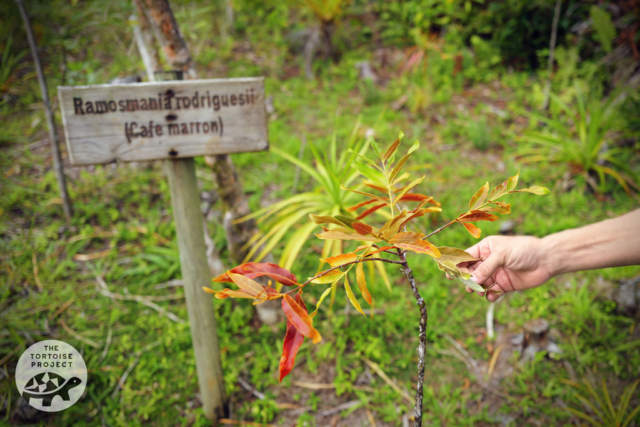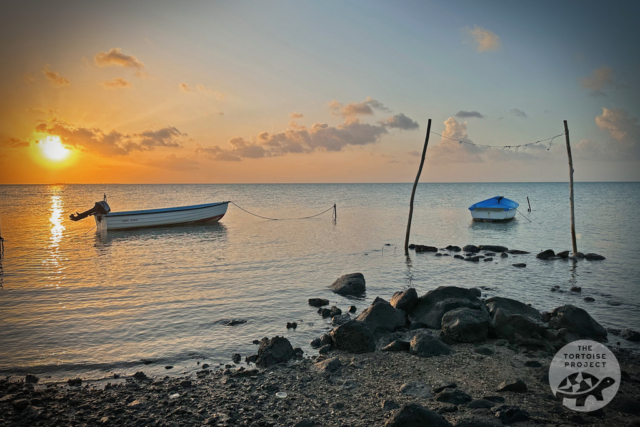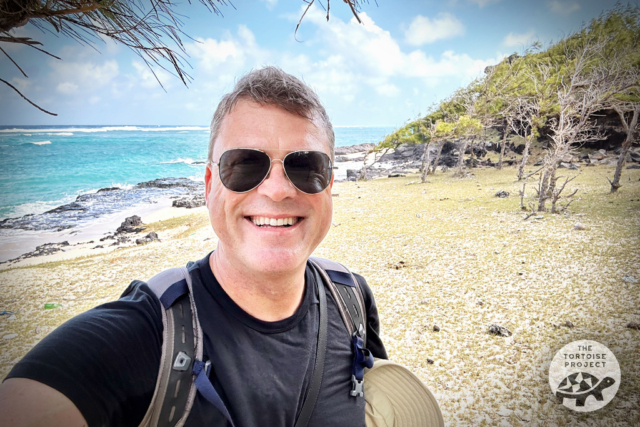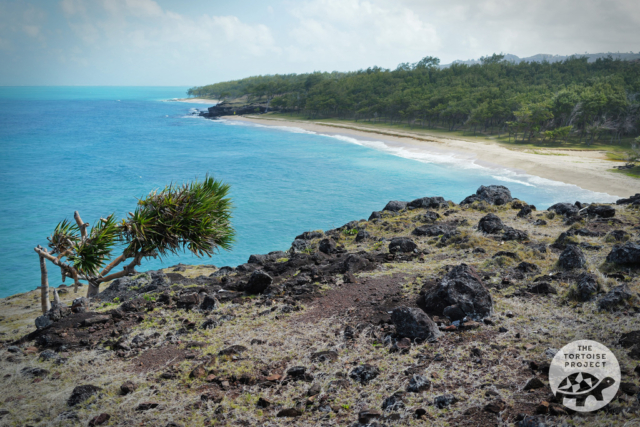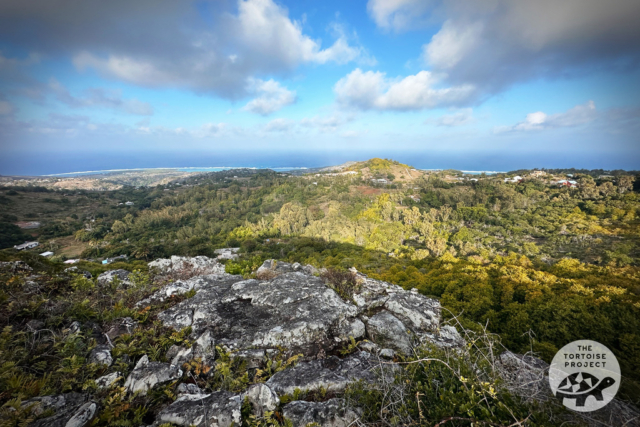One of the world’s great rewilding project that you’ve never heard of — François Leguat Reserve — is on a small speck of an island in the vast southern Indian Ocean: Rodrigues. Where’s that, you ask? First, imagine that you’re looking at Africa on the globe, and run your finger down to the bottom of the continent, to South Africa. Off the coast, to the east, is a big island — Madagascar — the world’s fourth largest island, and itself a tortoise hotspot. Keep going east. Can you find a small dot named Mauritius? This island is known for being home to the dodo once upon a time. Keep spinning east: 600 miles out to sea beyond Mauritius is Rodrigues, an even smaller island which once had the largest density of giant tortoises in the world, until humans came along.
Some 280,000 tortoises were hauled off on ships or killed for meat and oil between 1730 and 1770, and by 1802 the last reports of living tortoises came amidst the large-scale destruction of forest to make way for agriculture. It’s the same story as everywhere else, basically. Tortoises were consumed directly, hunted and shipped off, rats devoured their eggs and young, goats competed for forage, and their habitat was converted to farmland and other human uses. The island’s ecosystem was almost totally destroyed, with many species of plants and animals, including a close cousin to the dodo and two species of great tortoises being wiped out.
To bring back any part of the lost ecosystem, it’s not enough to merely restore the plants. You also need the forest’s inhabitants. And of those, you need most of all the great herbivores who keep the ecosystem intact. Replacement tortoises needed to be found.
This is what’s happening at the François Leguat Reserve, 20-hectares on the low coastal plain. I was super excited to visit this place in October 2023 and witness first-hand how giant tortoises are doing their part to restore a portion of the island’s coastal ecosystem… naturally. The replacement tortoises are the Aldabra giant tortoise (Aldabrachelys gigantea) and the radiated tortoise (Astrochelys radiata) from Madagascar, the closest living relatives to the extinct species.
I’ll admit that nothing really prepared me for the experience of being surrounded by even just a portion of the 3,000 tortoises that live here at the bottom of a limestone canyon. The canyon floor, and the plateau above, are green with trees and shrubbery that hint at the original descriptions by François Leguat from the 1700s. If you’ve never seen tortoises run, this is a good place to observe it… come at feeding time.
These photos included scenes from around the island, including the Grande Montagne Nature Reserve where a new forest is taking shape, and now tortoises have joined the cause. One of the cool stories involves a plant named “café marron” brought back from a single specimen that was coaxed into producing seed by Carlos Magdalena, a visionary horticulturist from Kew Gardens.

